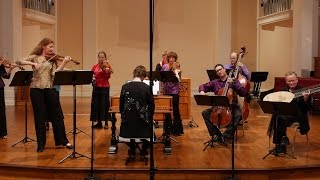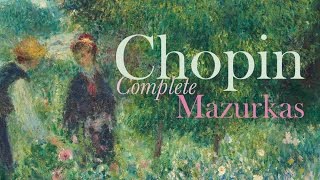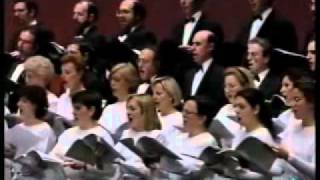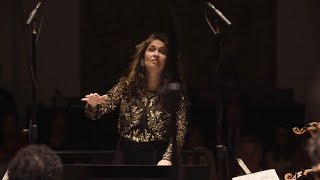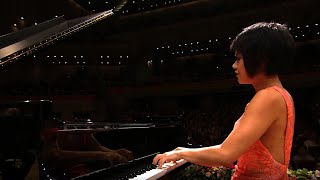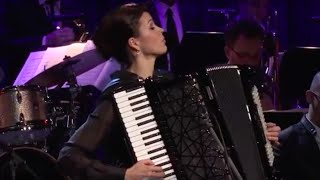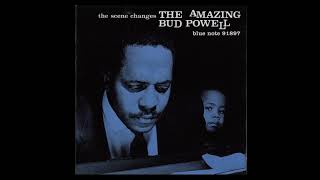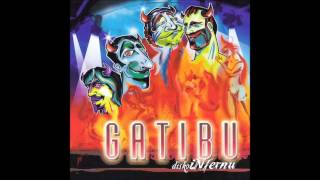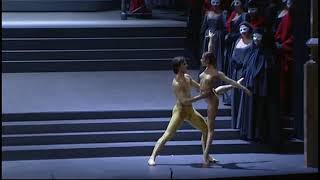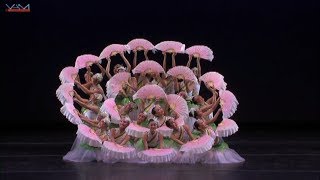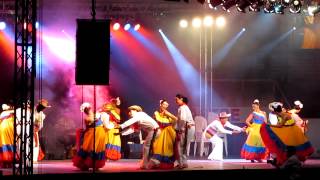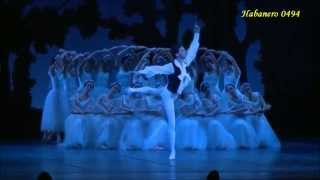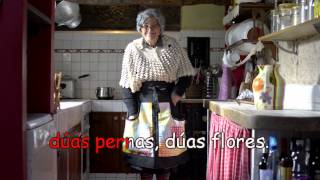On October 17, 1849, Frédéric François Chopin died.
Recommended music videos for initiation to classical music
Johann Sebastian Bach (1685-1750) was a German violinist, organist, conductor and composer. He was born in Eisenach into the most prominent musical family in history, with more than 30 famous composers in its midst. In 1703 he obtained his first job as court musician to the Prince of Arndstat and in 1707 he moved to Mülhausen as an organist, where he married his cousin Maria Barbara with whom he had seven children. After the death of his wife in 1720, he married again after a year and a half to Maria Magdalena with whom he would have another thirteen children. In 1723 he moved to Leipzig where he would reside until his death at the age of 65. A prolific composer, he is considered one of the three main geniuses in the history of music along with Mozart and Beethoven.
Today we attend the performance of the second movement, Adagio, of the Violin Concerto in E major, BWV 1042 by the British violinist Rachel Podger accompanied by the ensemble Voices of Music .
Frédéric Chopin (1810-1849) was a Polish virtuoso pianist and composer; as a pianist, he is considered one of the most important in history and as a composer, one of the leaders of Romanticism . He was born into a family with a musical vocation; his mother played the piano and his father, the violin and the flute; his first teacher was a sister with whom he liked to play four-handed pieces. At the age of eight he gave his first public concert at the Radziwill family palace in Warsaw . Chopin 's work focuses exclusively on the piano, solo or concertante, with which he embarked on a solo career of technical perfection, expressive splendor and deepening in rubato until he became the musical reference for that instrument.
Catalogue of Chopin's works . His works are classified by their Opus number (from the Latin opus 'work'; op. abbreviation) which is a term used in music to catalogue the works of most composers since the 17th century .
The mazurka or mazurka was originally a ballroom dance of the Polish royal court and nobility, which developed over time into a popular dance. Written in ternary time (3/4, 3/8), it is characterized by its accents on the 2nd and 3rd beats, in contrast to the waltz . It became known throughout Europe along with the polka (of similar structure) during the second half of the 19th century and became the fashionable dance of the great European capitals during this century. It is danced in pairs, and is a dance of lively and gallant character.
It was Frédéric Chopin , precisely, the main precursor of this stylized musical form, whose album we offer today by the hand of the Russian pianist Rem Urasin, interpreter of all of Chopin 's works.
Francisco Alonso López (1887-1948) was a Spanish composer, born in Granada . His music is graceful, cheerful, with easy melody and a popular accent. He excelled in pasodobles and chotis , to which he gave grace and ease. Many of his works continue to be highly appreciated, such as the pasacalle Los nardos , the chotis El Pichi, both by Las Leandras, the chotis Tabaco y cerillas from the magazine Las de Villadiego or the song Maitetxu mía (both with lyrics by Emilio González del Castillo ). He also wrote two pasodobles for the festivals of the city of Alicante, " Les Fogueres de Sant Joan ", entitled La festa del poble , which premiered in 1934, and La Nit de San Joan , a pasodoble foguerer for band, choir and solo bass. He came to preside over the General Society of Authors of Spain .
La Parranda is a zarzuela in three acts with music by Francisco Alonso and libretto by Luis Fernández Ardavín . It premiered on 26 April 1928 at the Teatro Calderón in Madrid . A work with a simple plot, it sings of the beauty of the rich and leafy Murcian orchard, the nobility of its people and the deep roots of its traditions. The score for La Parranda is one of Alonso 's best and includes abundant numbers that have been and continue to be popular classics, such as the romance for baritone that we present today En la huerta del Segura , subtitled Canto a Murcia.
The interpretation corresponds to the baritone from Malaga Carlos Álvarez , winner of the 2003 National Music Award in the interpretation category.
Jean Sibelius (1865-1957) was a Finnish violinist and composer, considered to be the musical reference of his country and one of the fathers of the Finnish national identity against belonging to Russia . He entered the Helsinki Conservatory where he studied violin and composition. After obtaining a scholarship, he moved to Berlin and later to Vienna to perfect his composition studies. Interested in the independence desires of his country, he wrote numerous works, in many of which the nationalist character prevails: piano music, chamber music, more than 100 songs for voice and piano, Masonic music, thirteen symphonic poems, seven symphonies, a violin concerto, incidental music for theatre, an opera and other smaller works.
Waltz Triste , Op. 44, No. 1, is a short orchestral work in waltz form composed by Jean Sibelius , originally as part of the incidental music he composed for his brother-in-law Arvid Järnefelt 's play Kuolema (Death) in 1903. Sibelius wrote six pieces for the Kuolema production of 2 December 1903. The first was entitled Tempo di valse lente – Poco risoluto . In 1904 he revised this piece, which was performed in Helsinki on 25 April of that year as Valse triste . It was an instant hit with the public, took on a life of its own, and remains one of Sibelius 's signature pieces.
Today's performance is brought to us by the Iunctus Orchestra, conducted by Austrian maestro Nazanin Aghakhani .
Recommended classical music videos
Giovanni Gabrieli (c. 1557 –1612) was an Italian composer and organist, born and died in Venice . One of the most influential musicians of his time, he represents the culmination of the Venetian school , framing the transition from Renaissance music to Baroque music. He studied with his uncle, Andrea Gabrieli , and for several years worked in Munich , at the court of Duke Albert V of Bavaria , where he is said to have studied with Orlando di Lasso. Around 1584 he is said to have been substitute organist at San Marco , and in 1585 he competed for and won the position on a permanent basis. Also that year he began working as organist at the Scuola Grande di San Rocco . He would hold both positions until his death. Following the death of his uncle, he succeeded him as principal composer at San Marco .
He composed various works in the style of his uncle but with even greater emphasis on contrasts, greater drama and colour. Like other composers of the Venetian school, his style was notably influenced by the particular characteristics of the Basilica of San Marco , with its separate galleries, so that the organs and choirs were located on opposite sides, in addition to the excellent acoustics of the place. Around 1597 he published his own collection Sacrae symphoniae , which brought him international fame. Of note is the Sonata pian e forte, in which, possibly for the first time, indications of dynamics (piano, forte) are given depending on whether the orchestras were playing alone or together.
The Magnificat is a genre of religious vocal polyphonic music, similar to the cantata, but based on the biblical passage from the Gospel of Luke 1:46-55 , which begins " Magnificat anima mea Dominum " and which does not belong to the liturgical year. The Magnificat was performed before masses on extraordinary religious holidays. This introductory character gives it a shorter length than the cantatas.
Today we offer Giovanni Gabrieli 's Magnificat a 14 performed by the ensemble brought together by The Green Mountain Project 2012
Frédéric Chopin 's Piano Concerto No. 2 in F minor, Op. 21 is one of two piano concertos by the Polish composer. Although published second, it actually precedes the Concerto No. 1 . It was completed in the late winter of 1829, when the composer was 19, and is dedicated to Countess Delfina Potocka . It was premiered by the composer himself on the piano on 17 March 1830 in Warsaw . It is, on the whole, more dramatic in tone than the Concerto in E minor . Nevertheless, it is a wonderful melodic inspiration, rich in romantic expressiveness and rhythmic sense.
Structure . The concerto is structured in three movements: I (0´7´´) MAESTOSO. Written in sonata form with a broad orchestral introduction that sets out the two main themes. The first of them is of gentle beauty, with a broad and lyrical phrasing; the second is intimate, developed by the soloist. When, after a fortissimo , the piano bursts in brilliantly, it will not leave its privileged position. - II (15´18´´) LARGHETTO. Intimate and loving, it was inspired by a love of Chopin 's youth: the soprano Konstancja Gładkowska . It has a tripartite structure, with the extreme sections full of amorous effluvia, while the central one has a contrasting dramatic sense. - III (24´07´´) ALLEGRO VIVACE. Written in rondo form, this final piece consists of two main themes: the first is endowed with simplicity and charm, while the second is practically a mazurka with a clear Polish flavour. The piano plays with both themes, in a relaxed and very bright atmosphere accompanied by an orchestra in which the strings dominate. The last section is written in moto perpetuo .
Yuja Wang (1987), our soloist today, is a Chinese classical pianist, who began studying piano at the age of six. She entered the Central Conservatory of Music in Beijing a year later. By the age of 21 she was already internationally renowned and was giving recitals around the world performing with the world's leading orchestras. In an interview with the Los Angeles Times she said: "For me, playing music is transporting me to another way of life, another way of being. An actress does that.”
The catalogue of Bach's works or Bach-Werke-Verzeichnis , better known by its initials BWV , consists of a numbered index of all the composer's works arranged thematically by type of work or genre and according to their vocal or instrumental nature and used by scholars and musicians around the world. This catalogue was created in 1950 by the German musicologist Wolfgang Schmieder .
Ksenija Sidorova (born 18 May 1988 in Riga ) is a Latvian accordionist. In 2016, she signed an exclusive record deal with Deutsche Grammophon ; her first album on the label, Carmen , is an accordion recreation of Georges Bizet 's Carmen that incorporates Latin, Asian, European and North American musical styles.
Concerto in d minor BWV1052 . It is a concerto written by Johann Sebastian Bach for harpsichord and string orchestra; it is the first of Bach 's harpsichord concertos . It is articulated in three movements: I (0´12´´) ALLEGRO .-. II (8´27´´) ADAGIO .-. III (14´38´´) ALLEGRO and today we offer it in a version for accordion and Big Band arranged by Callum Au and performed by Ksenija Sidorova accompanied by the Latvian Radio Big Band .
Tan Dun (1957) is a Chinese composer of contemporary classical music, based in New York City and known for the film scores for Wò hǔ cáng lóng , for which he won the Academy Award, Grammy Award and Bafta Award , and Hero , as well as for the music used for the Millennium Day (2000 Today) broadcast and the music for the Opening Ceremony of the 2008 Beijing Olympics . In 2013, he was appointed a UNESCO ambassador. His way out of the commune came in the form of a government-sponsored touring company of the Peking Opera . From there he went to the Central Conservatory of Music in Beijing and studied with musicians such as Tōru Takemitsu . He has written symphonies, concertos, operas and music for film scores.
Concerto for Orchestra . Although a concerto is usually a piece of music for one or more solo instruments accompanied by a full orchestra, several composers have written works with the seemingly contradictory title Concerto for Orchestra . This title is usually chosen to emphasize the soloistic, virtuoso treatment of various individual instruments or sections in the orchestra, with an emphasis on the changing of instruments during the piece. It differs from the concertante symphony in that it has no soloist or group of soloists that remains the same throughout the composition.
Today we offer Tan Dun 's work in a version by the NEC Philharmonia under the baton of the American maestro Hugh Wolff .
Recommended music videos for all tastes
Bud Powell (1924-1966) was an American jazz pianist and composer, a key figure in the development of Bebop. (jazz based on small groups such as trios and quartets with music based on rhythms and surprising harmonies). Born into a family of professional musicians, he began his piano studies as a child and was educated with the great classical music masters. At the age of fifteen he recorded his first album collaborating with the Sunset Royals . Throughout his life he alternated his musical activities with frequent admissions to psychiatric institutions.
Beyoncé (1981) is an American actress, songwriter and singer who became famous as the singer of the girl group Destiny's Child , which was one of the female groups in history that has sold the most records. After separating from the group, she began a new stage in which she calls herself a contemporary feminist . As a solo singer, she made her debut with the album titled Dangerously in Love . for her eponymous song, which won her five Grammy Awards. In 2010, her third album I Am...Sasha Fierce received six Grammy Awards. In 2016, her album was the best-selling album in the world. Throughout her 20-year career, she has won 24 Grammy Awards and is currently considered one of the best singers in popular music.
Gatibu is a Basque rock group born in 2000 that sings in Biscayan Basque. Emerging from the “Second Olaeta Music School” in Gernika, they have recorded various albums that have had a notable reception among the Basque public.
Sunidhi Chauhan (born 14 August 1983 in New Delhi) is an Indian singer. She rose to fame with a song titled " Ruki Ruki " which was featured on the soundtrack of the film " Zindagi " directed by Ram Gopal Varma . She has also received the Filmfare RD Award for Best Female Burmese Music Performer in 2001. In addition, Lata Mangeshkar also offered her musical training, as she had not received any other recognition previously.
Today she is one of the most recognized Indian artists for her talent, starting with the singer Asha Bhosle .
In 2009, Sunidhi 's beedi music was the theme song for the Brazilian soap opera India, a love story. This brought her a lot of fame both in Brazil and in other Latin countries.
Recommended peculiar videos
Amilcare Ponchielli (1834-1886) was an Italian composer born in Paderno Fasolaro (today Paderno Ponchielli ), Cremona. He began studying with his father, who was an organist, and at the age of nine he entered the Milan Conservatory . He was organist at the church of San Hilario in Cremona , where he was also a music teacher. He was master conductor of the Municipal Bands of Piacenza and Cremona , and composed some works for them. In 1881 he was appointed Chapel Master of Santa Maria Maggiore in Bergamo . In 1883 he became a professor at the Milan Conservatory . Among his other pupils were Giacomo Puccini and Pietro Mascagni . His operas, performed with great success, are Italian operas with a certain influence from French grand opera: a large number of characters, ballet and important participation of the chorus.
His best-known work is the opera La Gioconda , from which we are now offering his most famous piece, the Dance of the Hours , a romantic miniature ballet that is even better known than the opera from which it comes. This ballet was used by Walt Disney in his film Fantasia , to make elephants, ostriches, crocodiles and hippos dance in tutus.
Chinese dances have a wide range of artistic expressions due to their colors, their studied movements, their diverse origins and the circumstances in which they are performed; they range from popular dances to opera and ballet performances, and can be performed during public celebrations, rituals and ceremonies. Of the 56 recognized ethnic groups in China , each group has its own folk dances and moments to represent them; in addition, there is currently a resurgence and a movement to recover traditional Chinese dances and dances adapted to our times in which the color, the coordination of body movements and the variety of music and dances are highlighted.
Sonia Osorio de Sainto Malo (Bogotá, March 25, 1928 - Cartagena de Indias, March 28, 2011) was a Colombian dancer and choreographer. Founder of the Ballet of Colombia , she was one of the ambassadors of Colombian folklore in the world. Her work made her one of the women who gave the greatest international impetus to Colombian national culture, through dance.
Cumbia is a traditional Colombian musical rhythm and folk dance. It has contents from three cultural sources: indigenous, African and, to a lesser extent, white (Spanish), the result of the long fusion between these cultures. The music features drums of African origin; maracas, guache and pitos (millet cane and bagpipes) of indigenous origin; while the songs and verses are a contribution from Spanish poetry. As for the dance, it is worth highlighting the presence of sensual, gallant and seductive movements, characteristic of dances of African origin. The clothing has clear Spanish features: long skirts, lace, sequins, candongas and the same flower headdresses and intense makeup on the women; white shirt and pants, red scarf tied around the neck and hat on the men.
Les Sylphides ( French : Les Sylphides) is a short, non-narrative ballet in one act choreographed by Michel Fokine to music by Frédéric Chopin . It consists of the following pre-existing Chopin pieces: I (0´00´´) PRELUDE IN A MAJOR, OP 28, No. 7 .- . II (1´13´´) NOCTURNE IN A FLAT MAJOR, OP. 32, No. 2 .-. III (8´55´´) WALTZ IN G FLAT MAJOR, OP. 70, No. 1 .-. IV (11´48´´) MAZURKA IN D MAJOR, OP. 33, No. 2 .-. V (15´05´´) MAZURKA IN C MAJOR, OP. 67, No. 3.- . VI (17'20') PRELUDE IN A MAJOR, OP. 28, No. 7 .-. VII (21'10'') WALTZ IN C SHARP MINOR OP. 64, No. 2 .-. VIII (25'53'') GRAND WALTZ IN E FLAT MAJOR, OP. 18, No. 1.-.
Today we will watch it in a version by the National Ballet of Cuba with choreography by Alicia Alonso based on the original by Fokine .
Recommended music videos for children
Various Wikipedia articles have been used to write these texts.
The texts of Videomusicalis are written in Basque, Spanish and English.





